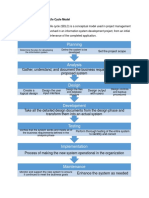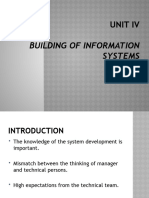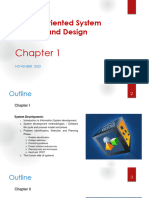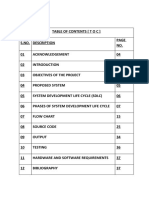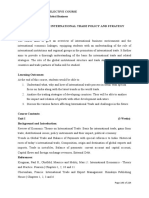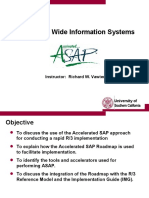100% found this document useful (1 vote)
114 views3 pagesSystem Development Life Cycle
The System Development Life Cycle (SDLC) is a conceptual model for developing or modifying systems throughout their lifecycles. It includes requirements, design, implementation, testing, deployment, operations, and maintenance. The SDLC involves feasibility studies, analysis and specification, system design, implementation, and maintenance/support phases. The goal is to result in a high quality system that meets expectations, is completed on time and budget, and works effectively in the current and planned IT infrastructure.
Uploaded by
Shem W LyngdohCopyright
© © All Rights Reserved
We take content rights seriously. If you suspect this is your content, claim it here.
Available Formats
Download as DOCX, PDF, TXT or read online on Scribd
100% found this document useful (1 vote)
114 views3 pagesSystem Development Life Cycle
The System Development Life Cycle (SDLC) is a conceptual model for developing or modifying systems throughout their lifecycles. It includes requirements, design, implementation, testing, deployment, operations, and maintenance. The SDLC involves feasibility studies, analysis and specification, system design, implementation, and maintenance/support phases. The goal is to result in a high quality system that meets expectations, is completed on time and budget, and works effectively in the current and planned IT infrastructure.
Uploaded by
Shem W LyngdohCopyright
© © All Rights Reserved
We take content rights seriously. If you suspect this is your content, claim it here.
Available Formats
Download as DOCX, PDF, TXT or read online on Scribd
/ 3
















